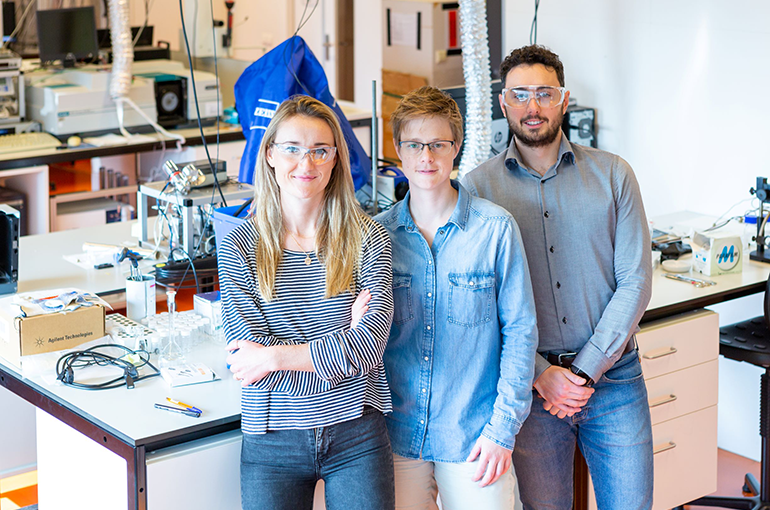“Collaboration is an essential condition for this degree of impact”
Researchers from the universities of Utrecht and Eindhoven, together with chemical concern BASF, have unraveled the mechanism behind CO2 conversion. “We were able to solve this puzzle thanks to a fantastic partnership”, says research leader Bert Weckhuysen. “This research result is the culmination of a series of publications that have built to this moment.” The researchers are publishing their findings in Nature Communications today.
In their publication, chemists from Utrecht University, Eindhoven University of Technology and BASF used both theoretical and experimental methods to describe how CO2 conversion occurs on the surfaces of metals. The conversion of the greenhouse gas CO2 into useful chemical building blocks for processes such as storing renewable energy from wind or solar power will present a multitude of new possibilities. It can contribute to reducing CO2 emissions, and in principle, it can also make it possible to produce basic chemicals directly from CO2.
Three first authors
This publication is unique in that three first authors each made equal contributions to the breakthrough: Charlotte Vogt, Matteo Monai and Ellen Sterk.
Last year, Vogt published an article in Nature Catalysis together with researchers from BASF and other institutions, on how the conversion of CO2 is dependent on the size of the metal nano-particles. She then used that knowledge to produce faster and more efficient catalysts for CO2 conversion.
Sterk provided the theoretical foundation for the most recent research as part of her Master’s thesis. In late 2018, she was awarded the AkzoNobel Graduate Prize for Chemistry and Process Technology in recognition of her effort. In her thesis, she worked on the theoretical quantum-chemical modeling of catalytic reactions, specifically the reduction of CO2 emissions in the atmosphere, using nickel as the metal. This research was conducted in collaboration with researchers such as Ivo Filot and Prof. Emiel Hensen from the Eindhoven University of Technology.
Goal-oriented team science
Vogt, Monai and Sterk are all members of the research group led by Bert Weckhuysen, which puts them at the junction of several collaborative efforts. In addition to the Strategic Alliance with Eindhoven University of Technology, the group is also a member of the research consortium ARC CBBC, together with the universities of Groningen and Eindhoven and four chemical companies including BASF, and the NWO Zwaartekracht programme MCEC, together with the universities of Eindhoven and Twente.
“Without this structure and the unique partnership, we would never have come this far,” says Weckhuysen. “This publication is a wonderful example of goal-oriented team science. In fact, I’d say that these kinds of collaborations are an essential condition for achieving this degree of scientific and social impact.”
Publication
Understanding carbon dioxide activation and carbon-carbon coupling over nickel
Charlotte Vogt*, Matteo Monai*, Ellen B. Sterk*, Jonas Palle*, Angela E. M. Melcherts*, Bart Zijlstra, Esther Groeneveld, Peter H. Berben, Jelle M. Boereboom*, Emiel J. M. Hensen, Florian Meirer*, Ivo A. W. Filot, Bert M. Weckhuysen*
Nature Communications, 25 November 2019, DOI 10.1038/s41467-019-12858-3
* authors affiliated with Utrecht University
Source: website Utrecht University

